Global Copilot Developer Summit - May 2024 - Toronto
A small recap on the Copilot developer summit held in Toronto's Microsoft head office, presenting the current and upcoming features of Microsoft Copilot and how it's being used.
As you might be aware, AI is all the new talk going around and with that, everything Microsoft is buzzing with the term Copilot, which you’ve probably heard about as well if you’ve been anywhere near any developer or coding environment. GitHub Copilot has been around and available for a few years now and has had some substantial improvements over the last 6 months.
Not only is Copilot being implemented within GitHub but Microsoft have introduced it to their pull suite along with Microsoft 365 and more coming soon too.
In this post I’ll go through some of the highlights from the talks at the summit speakers with all things Copilot that are out now and also a couple cool things that are on the horizon and coming soon!
A breakdown of what’s included in my post:
What is Copilot?
If you’re reading this, you probably already know of, or have an idea of, what Copilot is.
Many developers who have heard of or use Copilot will automatically be thinking of GitHub Copilot, which is a handy AI assistant tool for building, developing and troubleshooting your coding that increases your productivity.
Now Microsoft has enhanced Copilot to be not only code focused but an everyday generative AI companion and allowed it to access data on nearly all of your resources (and yes, they have security measure in place to protect your individual and organizational data).
And to match this, Microsoft have incorporated it into their Power Platform services to prototype, build and integrate apps and resources by simply chatting with Copilot (of course it’s not perfect and still requires some developer tweaking for the time being, but it’s getting there).
As one of the presenters mentioned:
“It’s called Copilot for a reason. You are the pilot and in control, this is your assistant that helps you on your journey.”
Presentations
The presentations touched on a few key areas about Copilot, how it works, where it’s being implemented now and some upcoming releases of where it will pop up shortly.
Let’s go into each presentation.
Welcome and Keynote - Kamal Shree
Kamal opened up the event with a remote, pre-recorded presentation with the journey of Copilot and AI, along with how it’s being implemented within the Microsoft ecosystem. It was also mentioned that this is a rollout summit and being presented gradually across the world in various major cities until it wraps up later in May this year.
Kamal had a large focus on the extensibility of Copilot and how they want developers and users to not only use it with its current features, but also to improve and extend it in the ways they choose to as well, which included building custom Copilots.
A brief overview of Copilot across the Microsoft Cloud that was shared had a table highlighting the below:
Adopt Copilot
Copilot for Microsoft 365
Copilot for Dynamic 365
Copilot for Power Platforms
Copilot in Windows, Edge, Bing
Extend Copilot for Microsoft 365
Copilot plugins
Graph connectors
Power Platform (Low-code development)
Build Custom Copilots
Azure AI Studio
Microsoft Copilot Studio
And we also discussed a breakdown of how Copilot for Microsoft 365 is architectured and shared a very informative diagram that explains the process that it follows in regards to the data transfer and responses:
You can find some great information on Microsoft 365 and copilot below:
Boosting Productivity with GitHub Copilot - Max Yermakhanov
Up Next we had Max who presented the usage of GitHub Copilot and using it live within Visual Studio Code. He went through before demoing it in action the best approach to get the responses that you want from GitHub Copilot as it can not always be straight forward, especially when you are a little bit vague in your request.
He focused on that you needed to be clear, have a goal set, be specific about what and how you want it to be completed and make sure you give it context to what you’re talking about. His exact breakdown to get the most out Copilot was:
Intent
Specify goal you have in mind
Clarity
Easy to understand instructions
Specificity
The level of detail about the task you wish to complete
Context
Additional information to help GitHub Copilot generate more accurate custom suggestions
If you specify these, then it can greatly improve the quality of the responses that GitHub Copilot can provide. Following this, Max went through and demoed the use of GitHub Copilot in changing code, fixing code and generating comments on the fly to the crowd.
It was brought up the costs and versions available, such as with a student account you have free access, then you can pay monthly for and individual or basic account and then there is the Enterprise subscription.
The enterprise subscription was mentioned to have some great features such as, if you want you can have GitHub Copilot focus on your own in-house repositories for code example and reference so it follows your organisations coding standards. It was also mentioned about the security and access requirements of enterprise accounts that the data does not get sent externally if chosen and licences can be provided for the organisational level. Which you can easily switch your Copilot licence in Visual studio code profile.
After this, Max raised something that we have all been excited about (well I’m super excited about it), unfortunately it hasn’t been release yet, but it’s coming soon and there’s a waitlist for access…. GitHub Copilot Workspace!!
This looks absolutely amazing for developers and productivity in the future, but as it’s still having a waitlist for access we didn’t go into too much detail, but you can find info on it here:
Power Platform Copilots - Alex Rostan & Haniel Croitoru
Following the GitHub Copilot presentation we dove into the Power Platforms and Copilot with Alex and Haniel.
They began by running through all the various AI offerings that are available through the Microsoft ecosystem and had a slide that could easily sum it up:
As you can see, AI is being implemented in pretty much everything Microsoft, but for this talk they wanted to focus on the Power Platform, which allowed to create apps and websites with data integration and functionality all within this same platform. They discussed the Power Apps, Power Automate and Power Pages in the suite, however I would have liked to go into the Copilot Studio, but I believe we were running out of time to go into that option.
They both demonstrated creating an app using Copilot, creating an Automated process and building a website, all by just providing a few sentences and it generated a result…. Sure it wasn’t the perfect or best result, but it was a great place to start with.
To give you an idea, below is an example of what was entered to create a full website that included text, pages, navigation, etc (it wasn’t the perfect looking or best website, but it was there and up and running).
It was good to demonstrate the speed at which it could generate results for the user and simplify the process. But like I mentioned before, it does still need behind the scenes developer editing to be able to get the best performance and custom features.
Another thing with the Power Platform apps, was the pricing. Each service has a different licence and pricing structure which can add up and once you have something running, it starts charging you straight away.
However, if you have a developer account (which you can setup for free if you don’t) you can play around with the Power Platform apps in a Sandbox(test) environment to see how it works.
What is Copilot for Azure? - Ehsan Eskandari
And lastly we had a presentation by Ehsan about Copilot in Azure. This is all in limited public preview and he mentioned multiple times that it is still being worked on and a bit buggy… for this talk he wasn’t able to present it as the entire service was down at the moment, but the potential for this when it’s complete and released will be amazing! DevOps engineers will love this!
Copilot for Azure allows Copilot to access your entire Azure environment and give you on the spot information and customisation to do what you need. It was mentioned that it is not specific
You can gain access to Copilot for Azure right now, however you need to submit a request and it can take upto 2 weeks for approval, and there are a few requirements, as Ehsan mentioned in his slide:
At the moment you can’t setup at an organizational level unless your organization has been approved by Microsoft, and you’ll need a tenant admin too, make sure you follow all the instructions to lodge your request if you choose to.
There were a few limitations while it’s in the public preview:
And what you can do in the public preview are:
Understand your Azure environment
Get resource information
Understand service health
Analyze and estimate costs
Work smarter with Azure services
Deploy VM’s effectively
Build infrastructure and deploy workloads
Secure and protect storage accounts
Work smarter with hybrid infrastructure
Get monitoring information
Write and optimize code
Generate Azure CLI scripts
Discover performance recommendations with Code Optimizations
Generate Kubernetes YAML files
Author API Management policies
Troubleshoot deployed web apps
Navigation
Manage portal settings
It was also discussed some of the use cases for copilot within Azure:
Design
Use Copilot to configure the right services for your applications and environment while aligning with organizational policies
Operate
Use Copilot AI assistance to answer questions, author complex commands and act on your behalf using natural language
Optimize
Improve costs, scalability, security and reliability through recommendations for your environment
Troubleshoot
Orchestrate data across Azure services for insights to summarize issues, identify causes and suggest solutions
Security with Copilot for Azure:
Copilot activation is tenant-wide
Currently there is no way to limit to a specific subscription
Copilot runs under the logged in user’s permissions
Can’t do something the user is not allowed to do
It always asks for confirmation on actions - need to confirm before actions take place
So at the moment it’s still being worked on and developed so a little bit buggy, but there is a huge potential to greatly improve the developer experience and I’m sure all those DevOps and infrastructure peeps will be loving this too!
Resources:
Some resources shared by Kamal Shree:
Some resources for Copilot on Azure provided by Ehsan Eskandari:
After the summit the reactor team also sent out a link to some handy AI learnign resources:
Summary
The Microsoft Reactor team did a great job hosting another meetup at the Microsoft head office again with informative presentations on Copilot and it’s usage in the Microsoft ecosystem.
There is still a bit of development and implementation to incorporate Copilot fully into the range of Microsoft product seamlessly, however what’s been released so far is qute impressive and seeing it in action.
I’ve been using GitHub Copilot myself for quite some time and it has definitely sped up my productivity, but to see the Power Platforms in action with it was new for me. And I have to say I’m super excited with the upcoming Copilot for Azure, once the bugs and issues get worked out.
Looking forward to the future of copilot and keeping my eye out on the Copilot Workspace too.
Until next time, happy Dev-ing peeps!





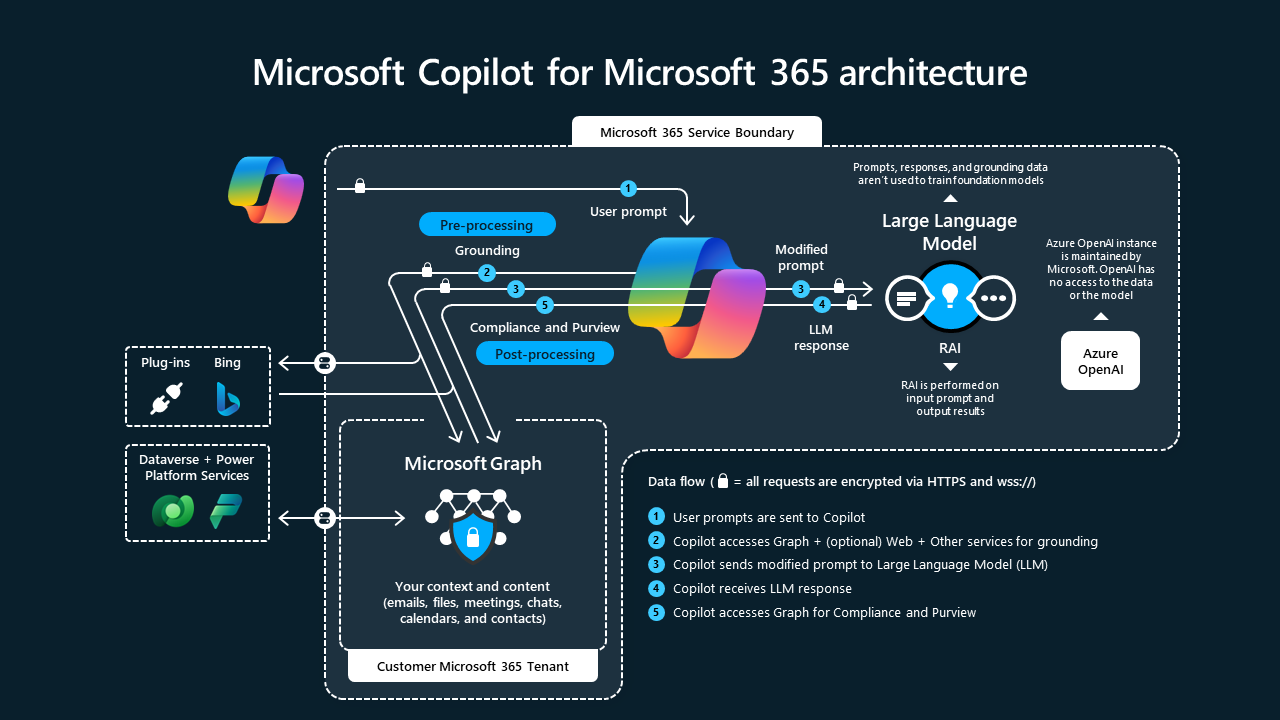
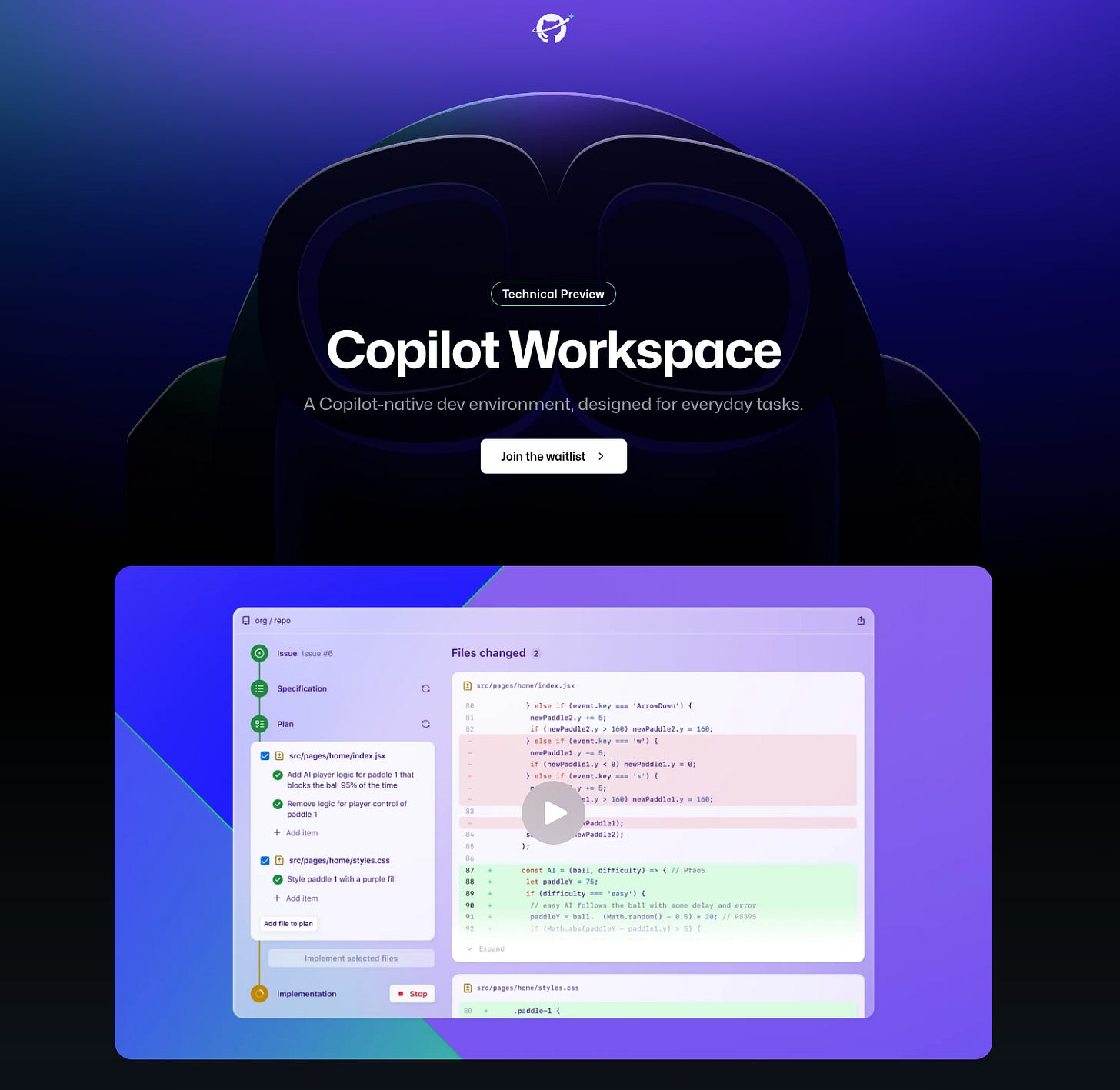

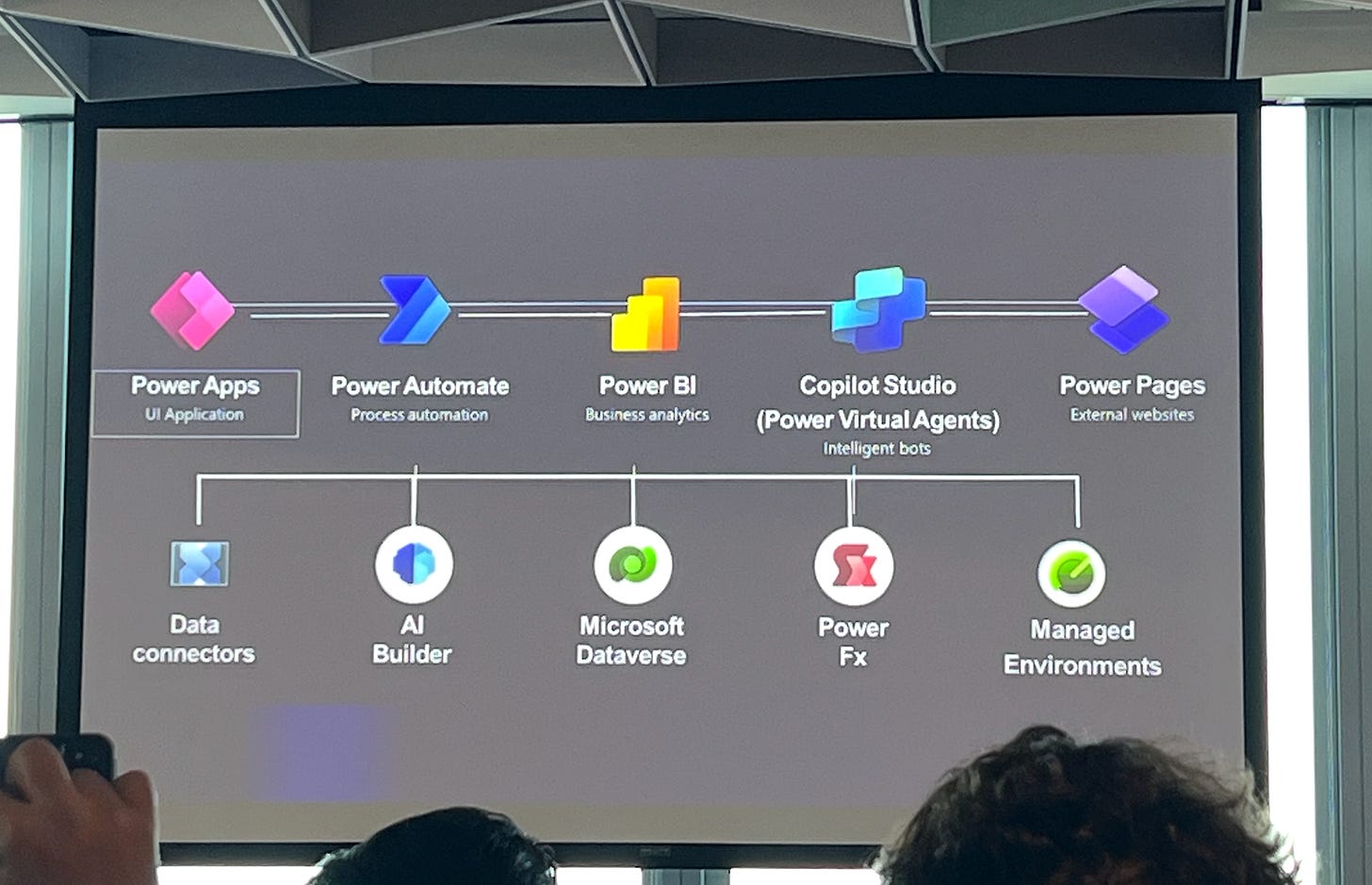
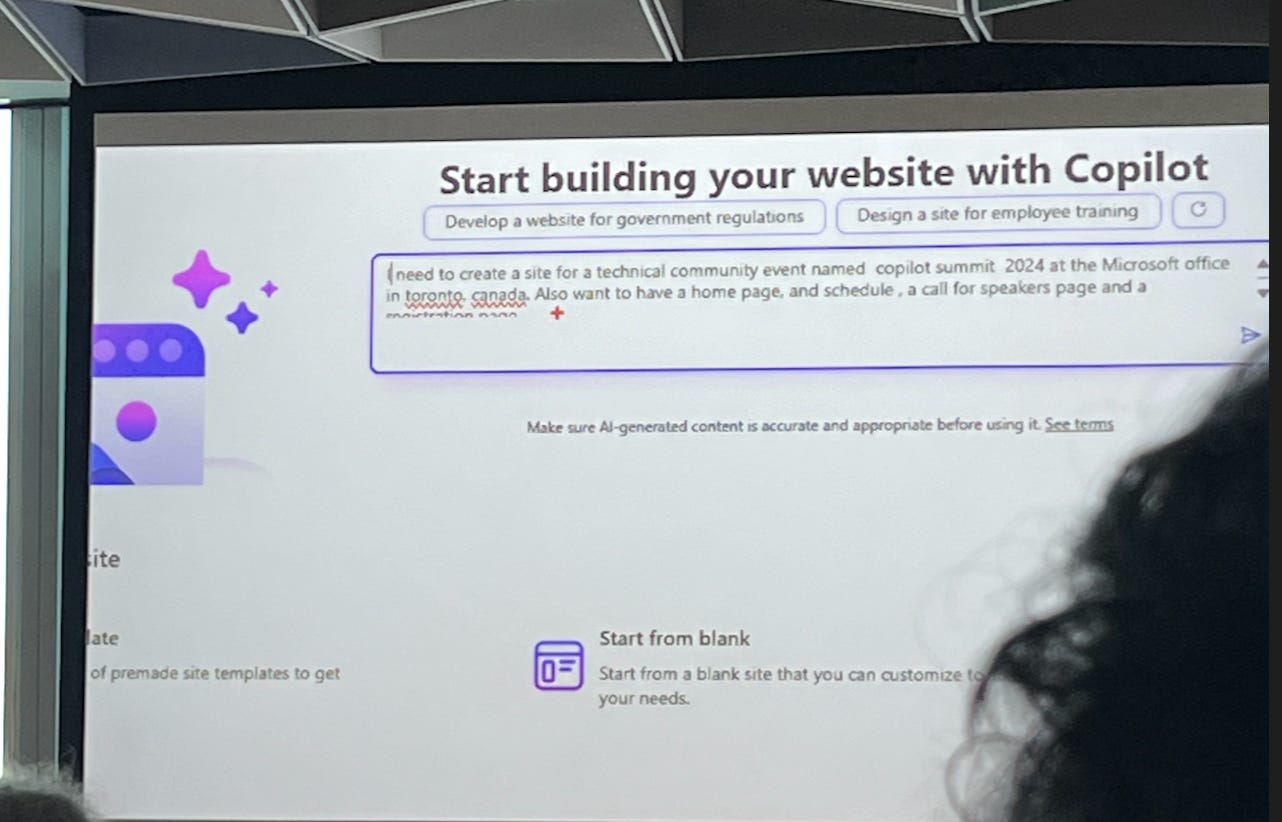
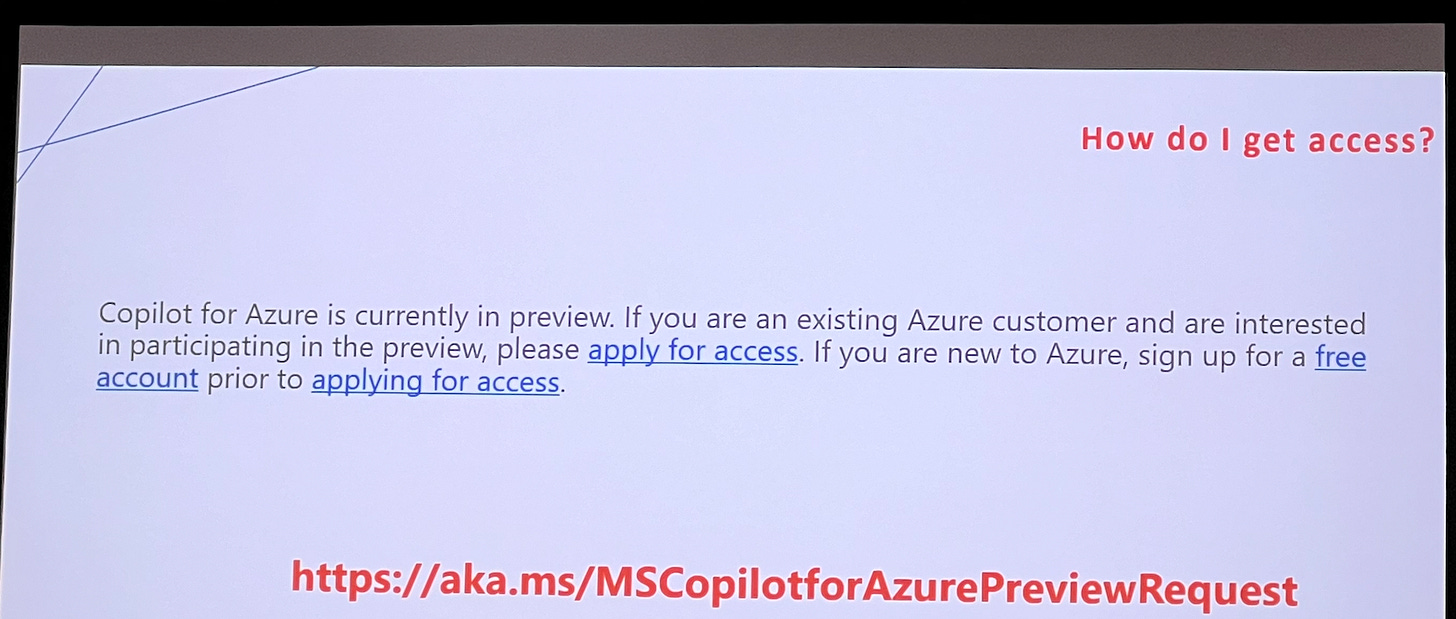
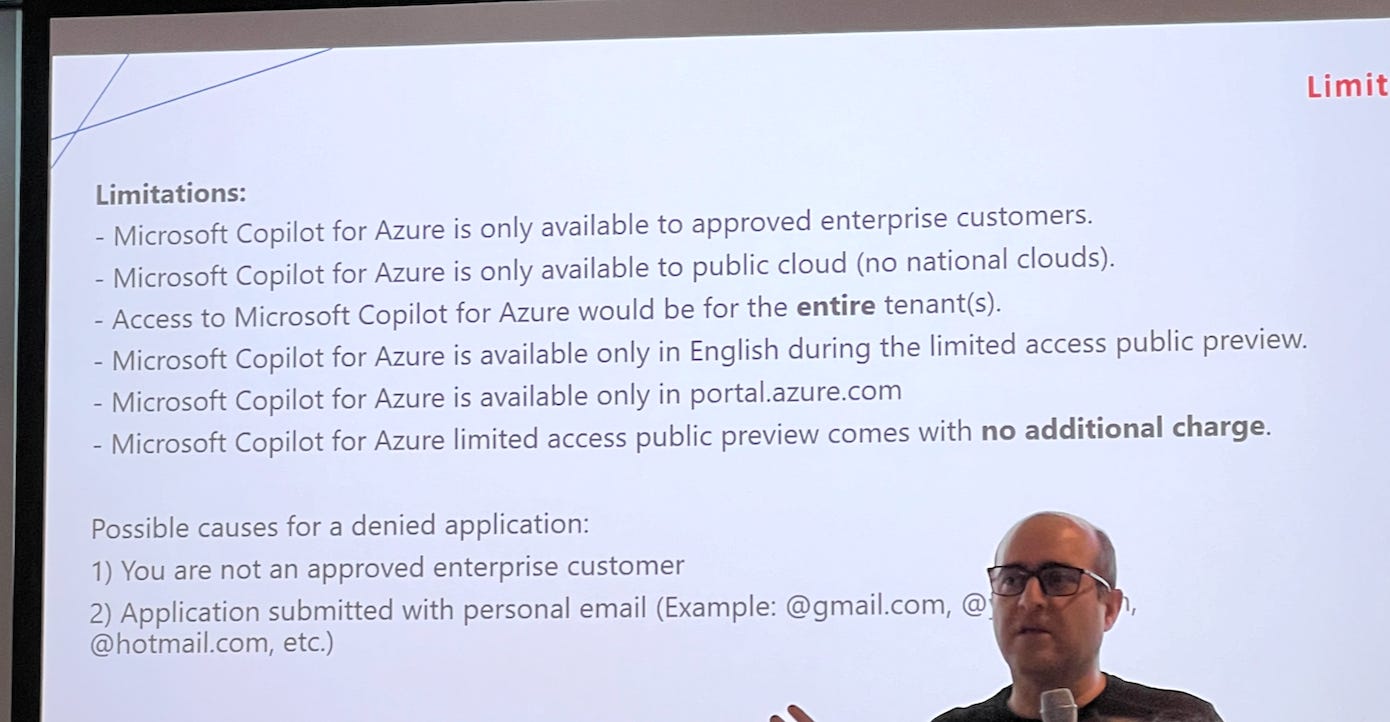
Awesome post Pascal, a great summary of the key topics for someone that was not there.